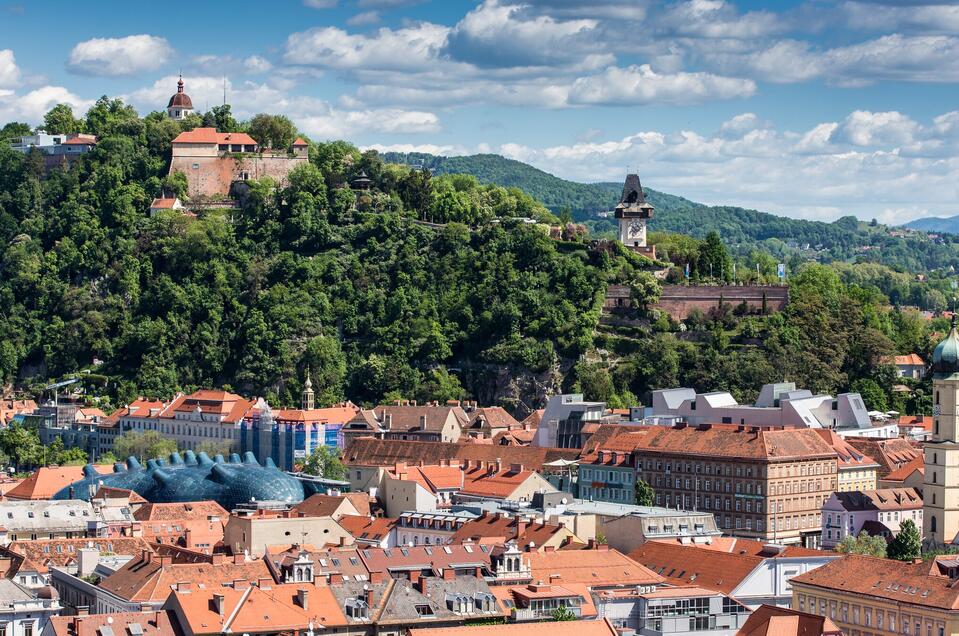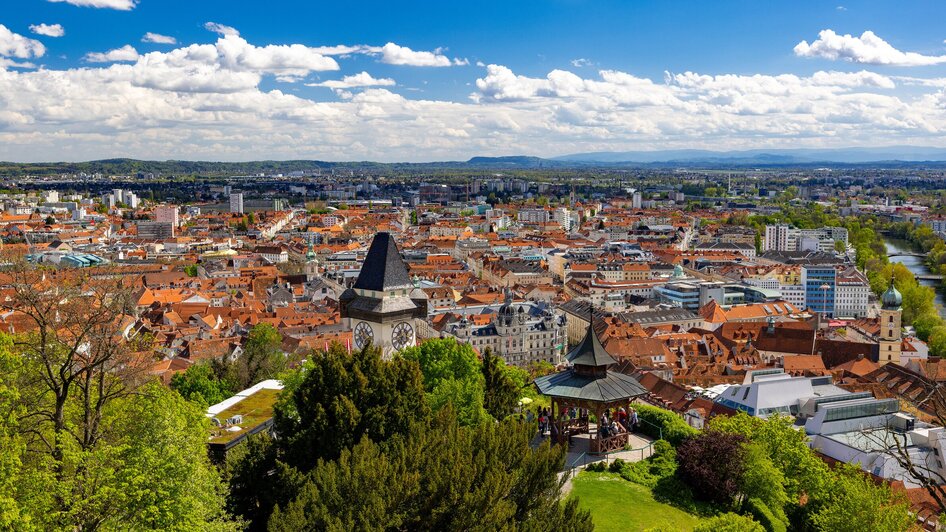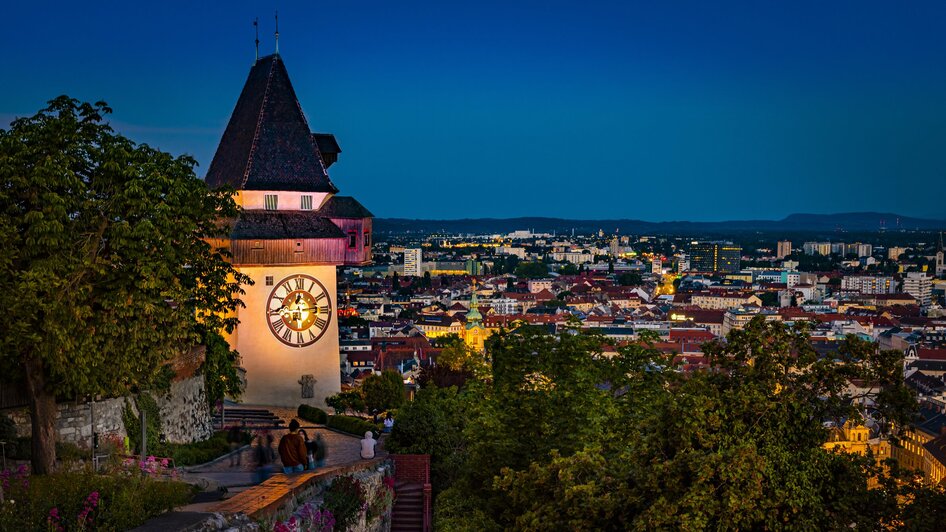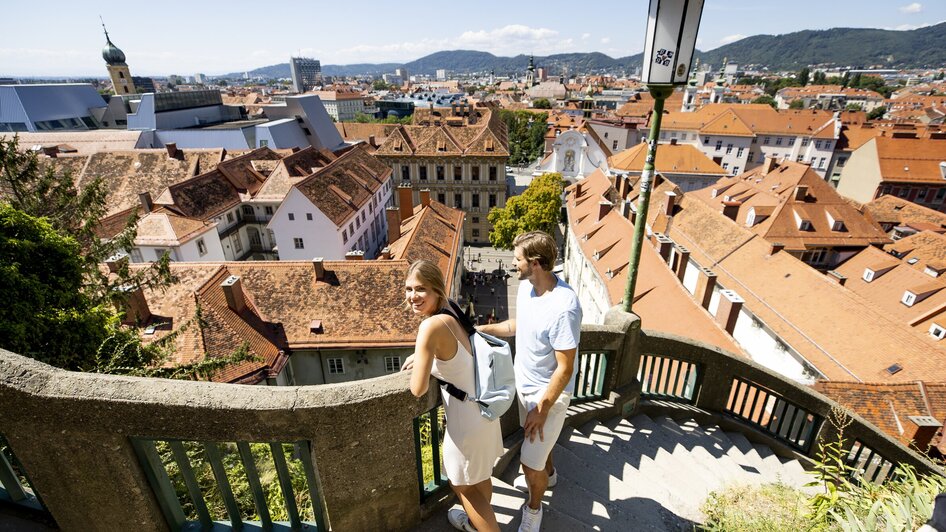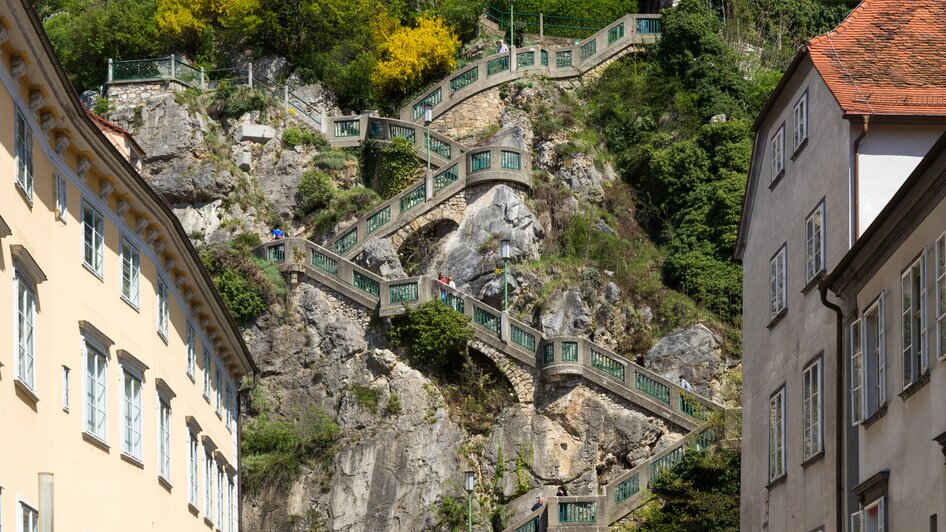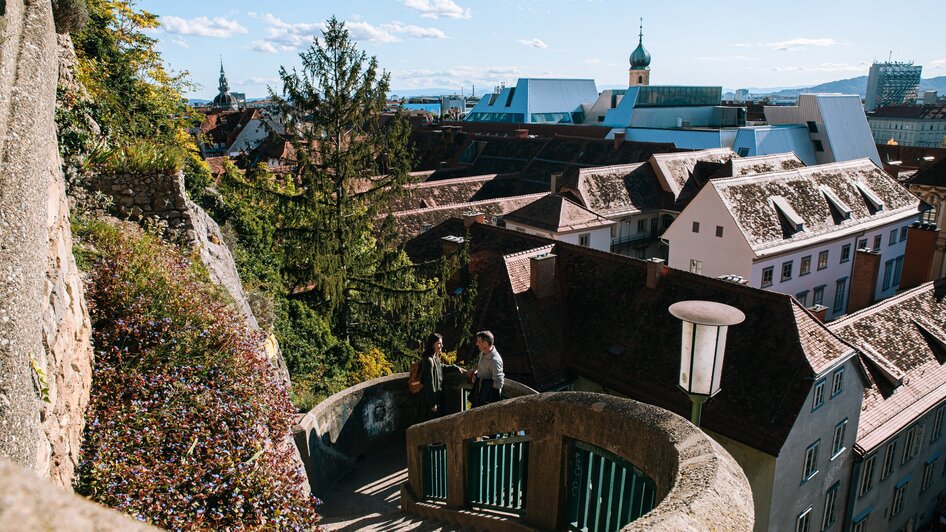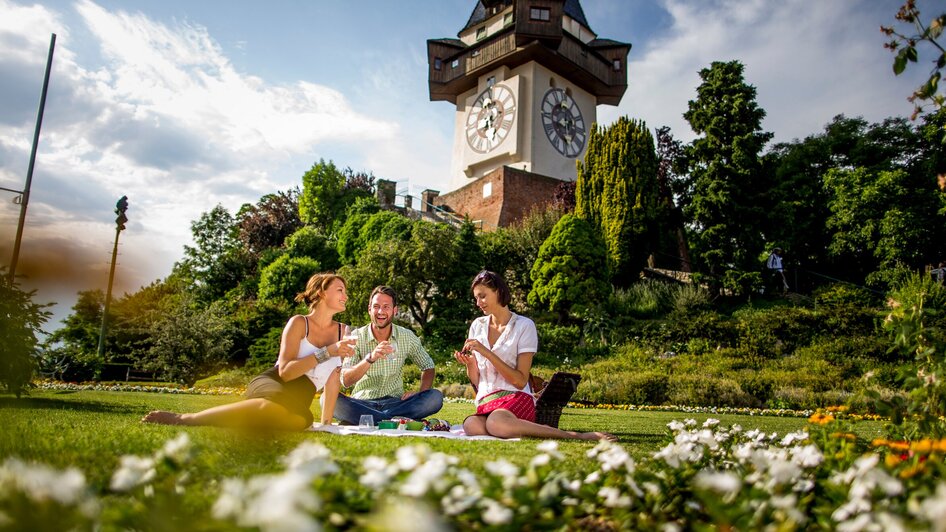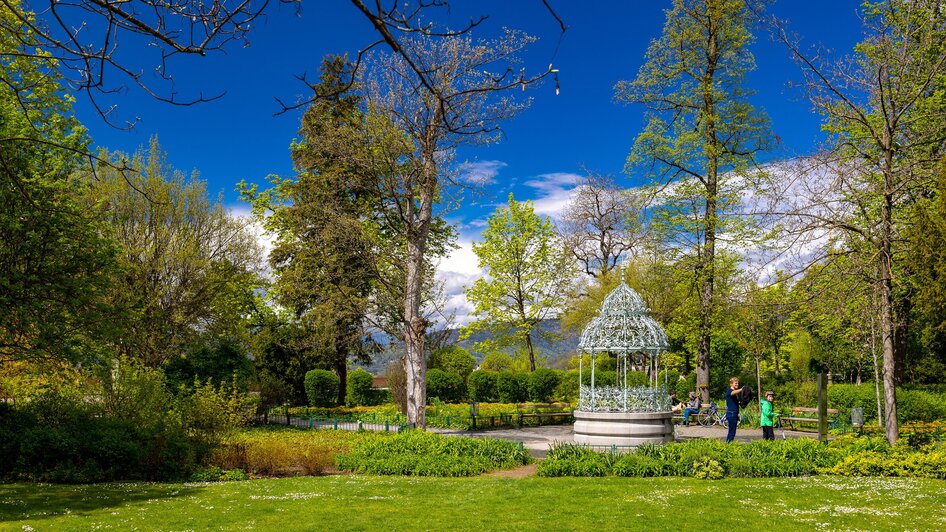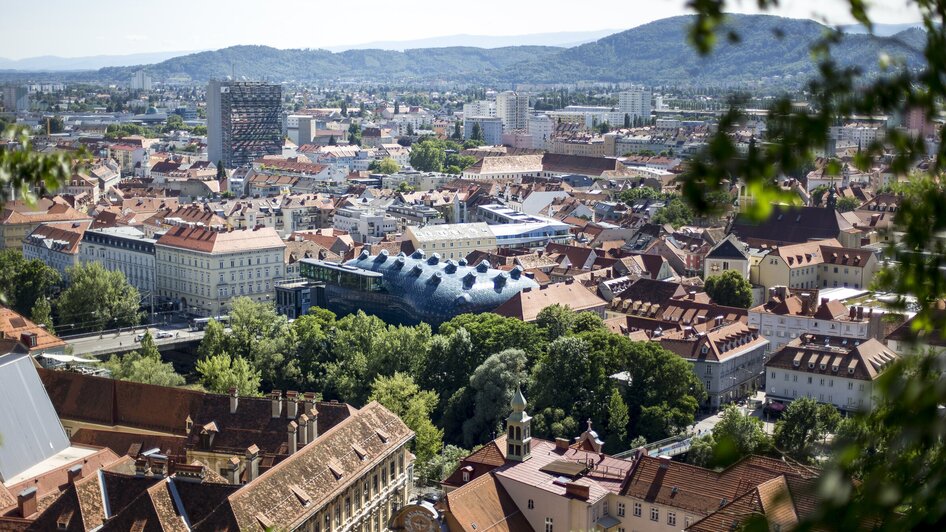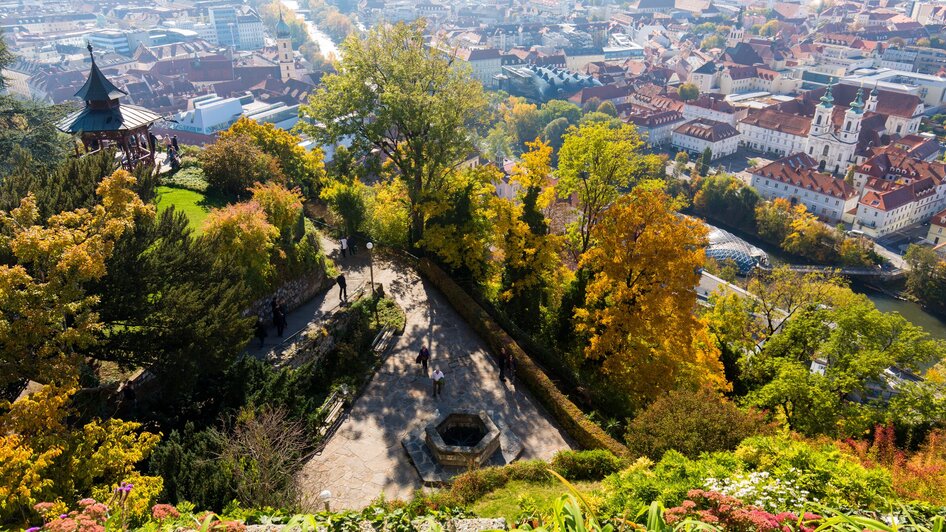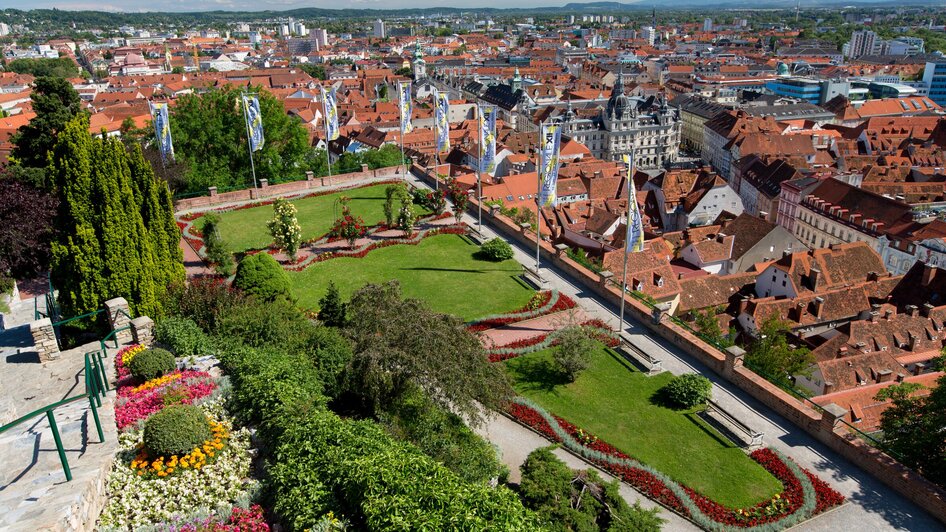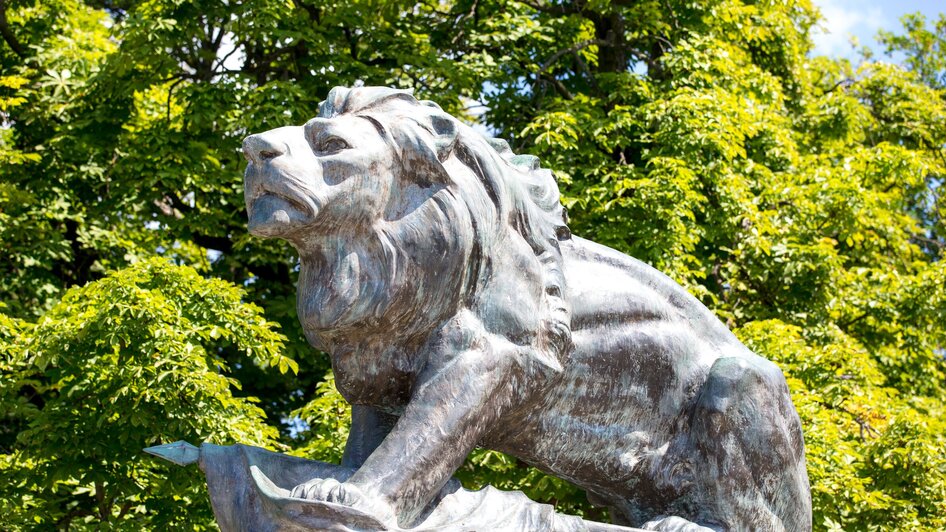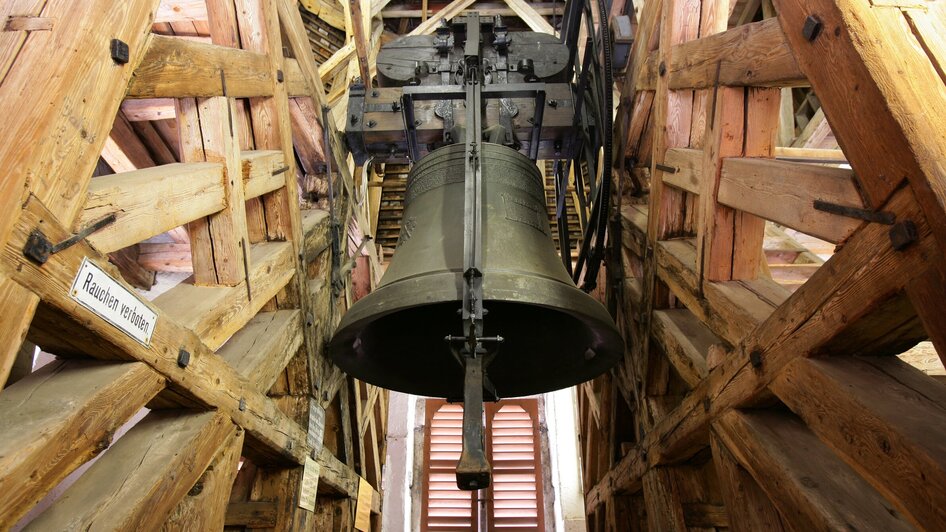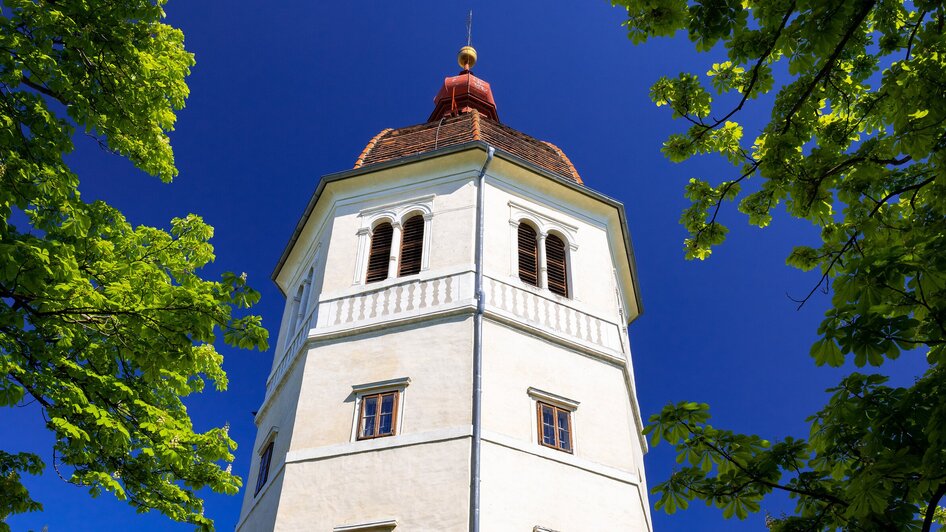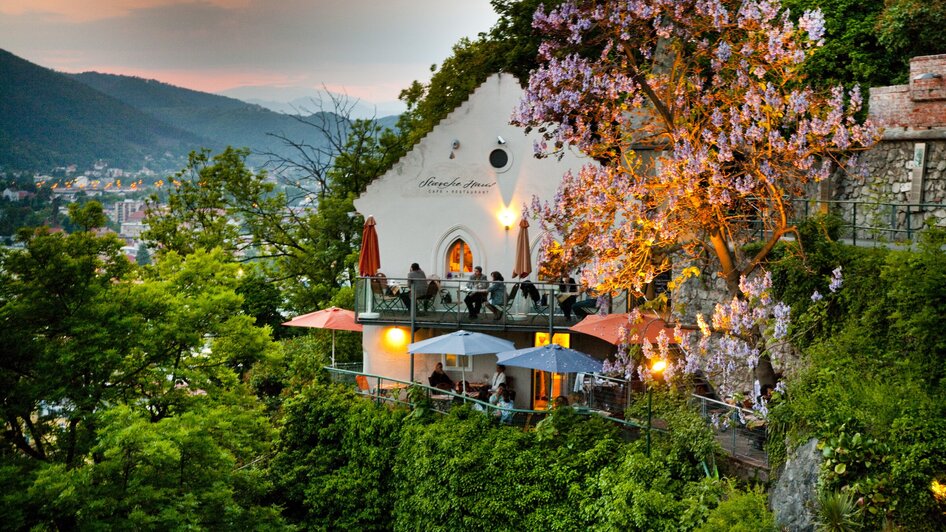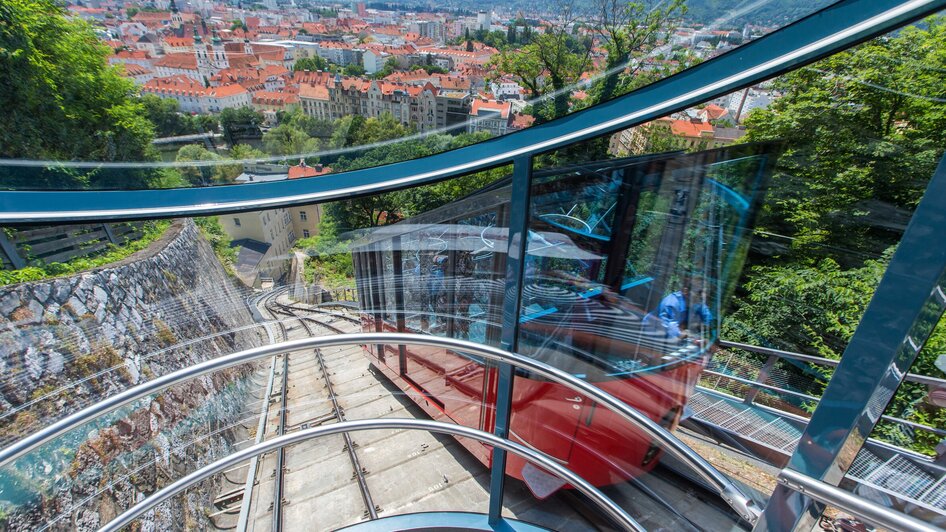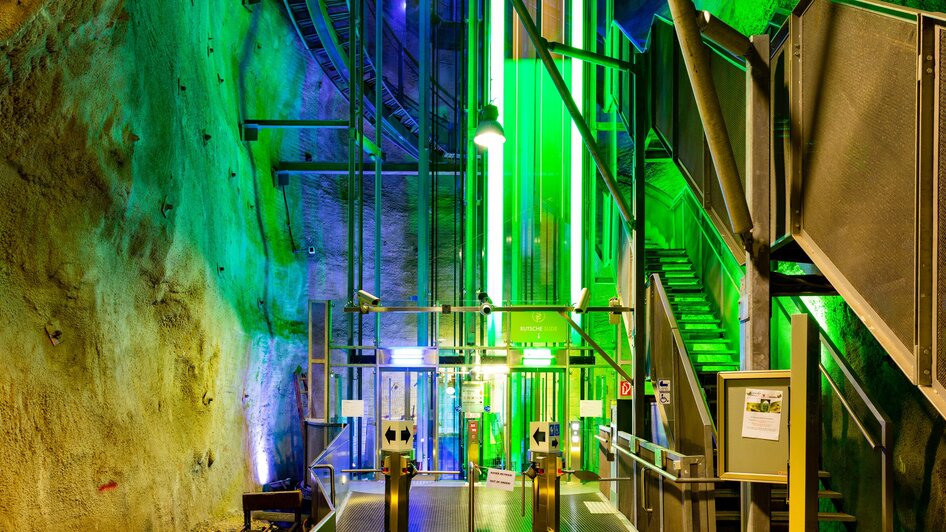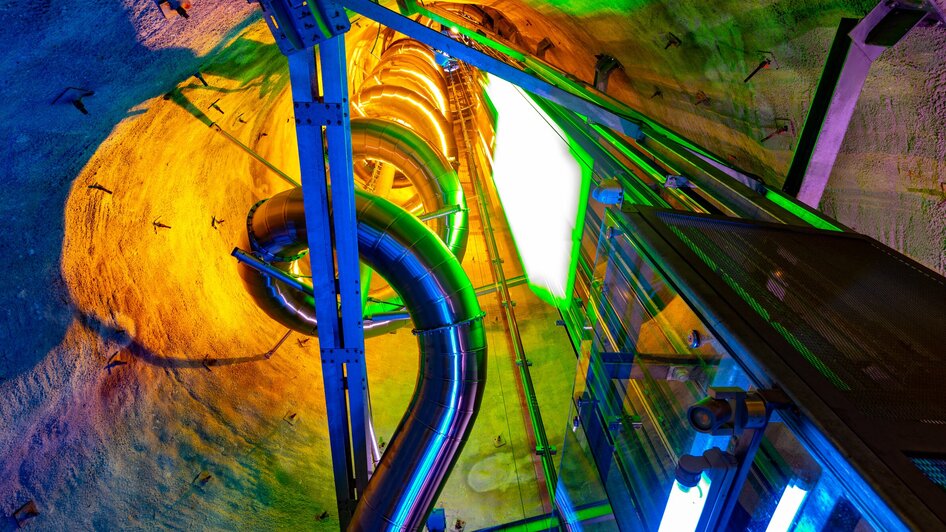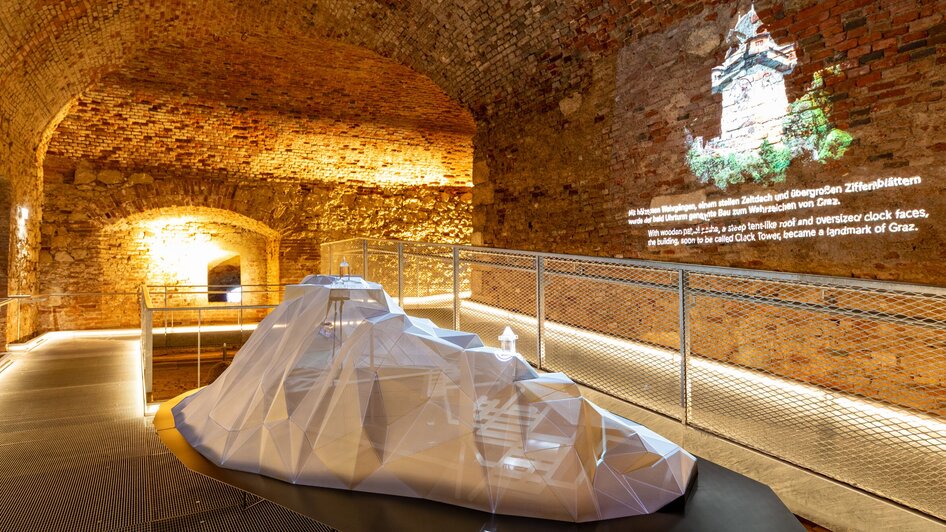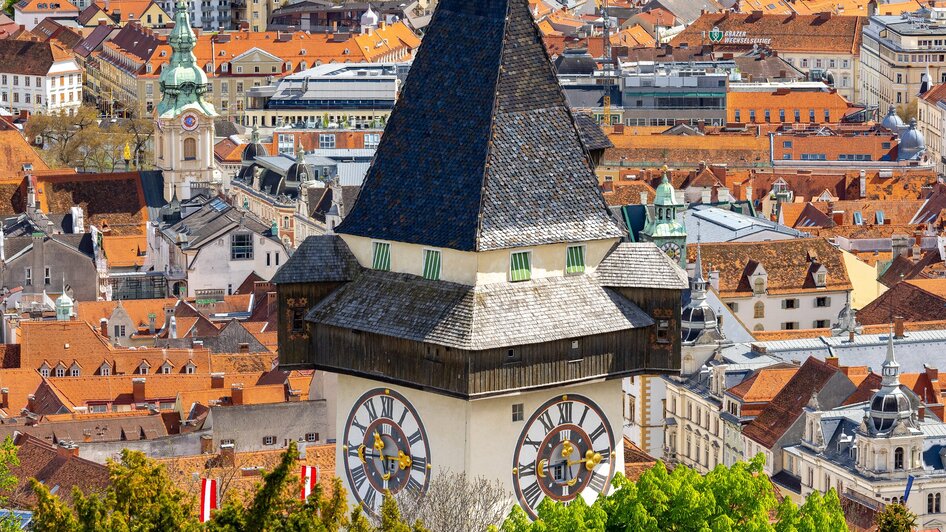Schlossberg
GrazEnjoy the view from the Schlossberg in Graz in the middle of the old town.
There are four ways to get to the top of the 473-metre high Schlossberg: on the Schlossberg Funicular railway, in the glass lift that ascends inside the mountain or on foot up the Schlossbergstiege stairs and via Karmeliterplatz.
Over 1,000 years ago the small fort that stood on a rock ledge here gave the city its name. Derived from the Slavic word ‘Gradec’, Graz means “little castle”. After 1544, according to plans drawn up by Domenico dell’Allio, it was extended into a huge Renaissance fortress, now listed in the Guinness Book of Records as the strongest ortification of all time. Even Napoleon found it impossible to capture at the beginning of the 19 th century; it was only in 1809, when he had occupied Vienna and was threatening to destroy the Austrian capital, that Graz surrendered. Almost all of the fortifications were razed to the ground – only the bell tower and clock tower were allowed to remain, ransomed by the citizens of Graz and so spared.
The Schlossberg. It attracts people. In springtime by fresh green, the first warm rays of sunshine, in summer by shady trees and open-air performances, in autumn by the blaze of colours, and in winter you can escape to it from dull routine in the city. And all that within a few minutes. Since 1894 the Schlossbergbahn funicular has mastered the gradient of about 60% perfectly - lately with new observation cars. On top of the hill there is much to discover.
The Bell Tower dating from the 16th century. Inside it - the "Liesl", the heaviest bell of Graz. There is the casemate open-air stage in the former cellars of the destroyed main building of the fortress. A cistern, the Türkenbrunnen (Turkish well), 94m deep, and the mighty Stallbastei bastion were all built by Domenico dell'Aglio. He was leading among the architects from Northern Italy who in the mid-16th century erected new city walls in Graz and a 400m-long fortress on Schlossberg. No one could take this fortress. Not even Napoleon. However, after a victory over the Habsburgs in 1809, Napoleon demanded the demolition of the fortress. A huge amount of money paid to the French by the burghers of Graz could prevent the Clock Tower and the Bell Tower from being destroyed. Thirty years later, Baron of Welden transformed the former fortress hill into the romantic park with its southern plants, which it is still today. The c. 260 steps of Schlossbergtreppe lead you downwards. As does the glass lift which terminates in the Schlossberg tunnel system. The latter was built in World War I as an air-raid shelter for the people of Graz.
Today it houses not only a grotto railway for the little ones but also the "Dom im Berg", an event and exhibition hall equipped with state-of-the-art technical infrastructure - and all that in the centre of a rock.
By the way: According to legend, it was the devil himself who created Schlossberg. He had promised the people of Graz to make their local mountain, the Schöckl, higher. Of course, in exchange for the first soul climbing up heightened Schöckl. When flying over Graz with a huge rock from Africa in his hands, he caught sight of a procession. It was on Easter Sunday. On which he had no power over humans. And therefore he could not win any soul. In (un-)righteous anger Satan threw the rock onto the town. The rock broke in two parts. Today the smaller one is Austein with its Calvary. The bigger one is Schlossberg.
Contact
Grazer Schlossberg
Am Schlossberg
8010 Graz
